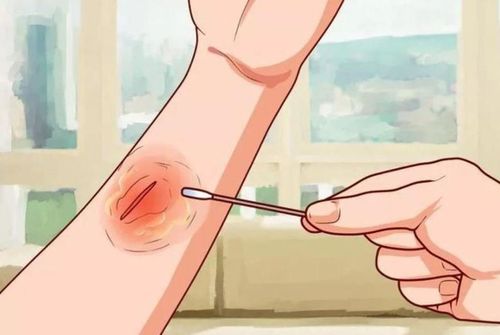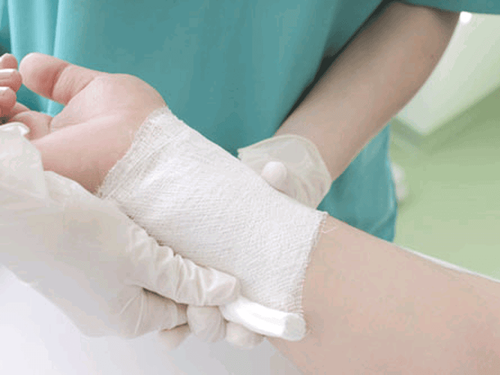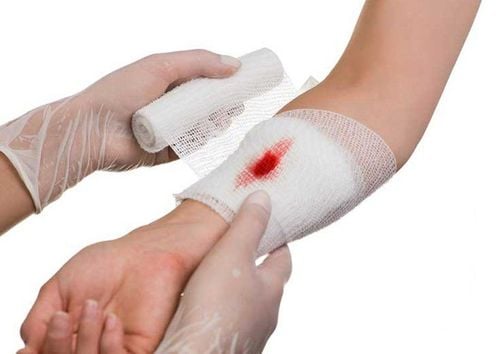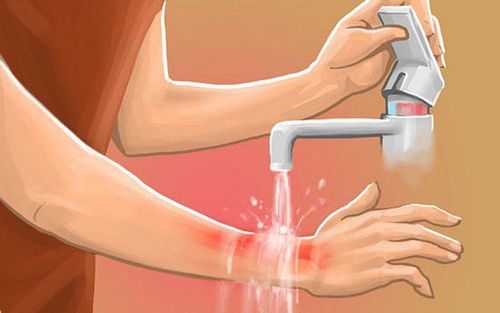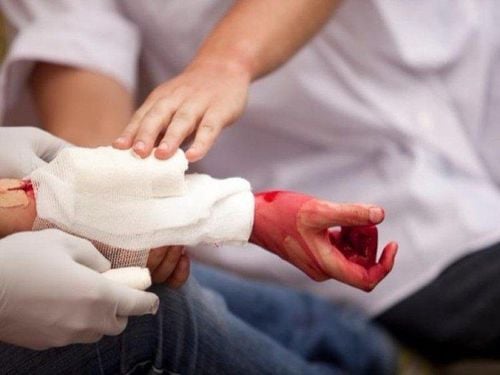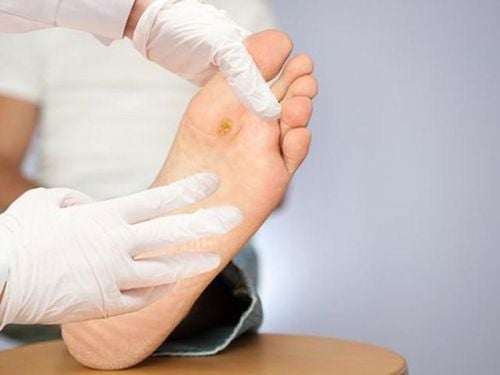This is an automatically translated article.
Article written by Specialist Doctor II Phan Phi Tuan - Department of General Surgery - Vinmec Phu Quoc International General Hospital
Local care of burns is a very important work in burn treatment to avoid infectious complications, quickly regenerate granulation tissue, limit bad scars and sequelae, reduce pain and length of stay. institute.
I. Outline
Daily burn examination is a mandatory job of the doctor to assess the local progress of the burn as well as the patient's general condition. From there, there is an appropriate course of action.
The local care of the burn is divided into several stages:
First aid immediately after the burn. Initial treatment of burns at primary health facilities. Burn care at the burn hospital. In the later stages, different dressing methods can be used such as closed, semi-closed, semi-open or fully open dressings.
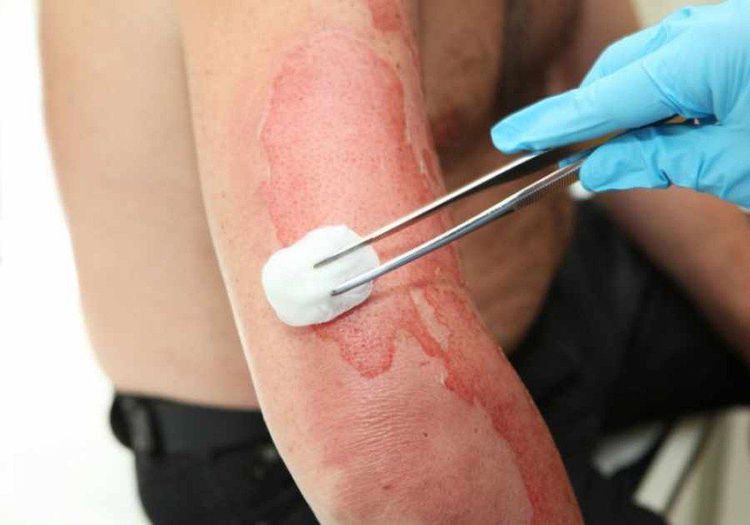
II. Methods of care for burns
1. Sealed tape
This is a commonly used method, especially in wartime conditions, when patients have to be transported or when the hygiene of the ward is poor, and the sterility is not guaranteed to take care of burns by the open method.
Advantages:
Covers and protects burns against infection and cross-contamination. Pain relief for the patient. Convenient for serving, traveling or transporting patients. Keep the drug effect lasts long when applied, absorb secretions, keep the burn moist. Reduces heat loss or evaporation through the burn. Cons:
Can't track burns continuously. The dressing must be changed as often as daily or every other day. Pain or damage to granulation tissue during dressing changes. Stagnation of secretions, pus at the burn. Procedure
After changing the dressing according to the procedure, use the following methods to cover the burn:
Wet dressing: gauze soaked in physiological saline or open bacteriostatic drug or cream applied to the burn then apply 4- 6-8 layers of sterile dry gauze. Thick dry bandage: use powdered medicine sprinkled on the burn, then cover the burn with a thick bandage.
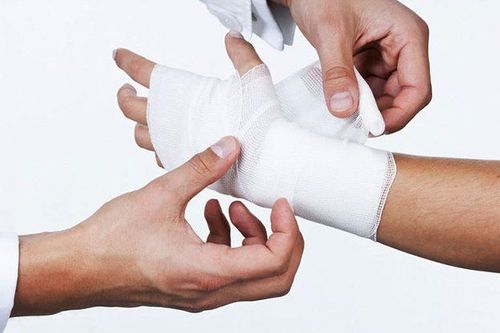
2. Semi-closed method
Change the bandage according to the procedure, apply wet gauze soaked in medicine and then leave it open. Then carry out irrigation several times or continuously drip with physiological saline. This method is often used in cases of deep burns that cause necrosis or purulent arthritis.
3. Semi-open method
This is the method applied to the skin area. 24 hours after surgery, change the dressing of the skin, remove the outer layer of gauze, keep the innermost layer of vaseline gauze. Keep it clean and dry, after 7-10 days the skin area will recover and the vaseline gauze will peel off on its own.
This method is also used when the bandage method is closed, but the burn is relatively dry, and gauze sticks to the burn. Change the dressing, remove the outer layer of gauze, keep the innermost layer of medicated gauze until it heals.
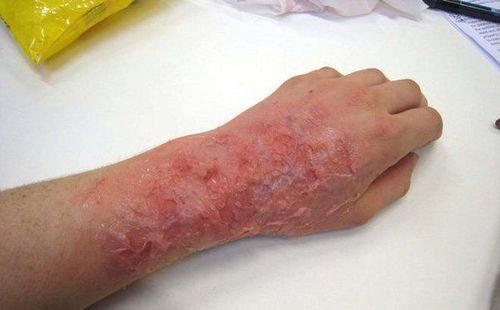
4. Method for exposing burns
Advantages:
Drys burns and gangrene, can convert wet necrosis to dry necrosis, thereby reducing burn infection. Burns can be monitored regularly. No dressing change, avoid pain and save the patient. Cons:
Requires good hygiene and sterility to avoid cross-contamination or superinfection. Elaborate care. Causes dehydration by evaporation through the burn. Procedure:
Apply medicine to the burn, leave it open and do not change the bandage.
This method is usually carried out in sedentary conditions (no mosquitoes, no changing bed linen many times, few patients in 1 ward, limited visits to animals, avoiding contact with many people....) . Cases of applying this method include:
Superficial burns of the face, neck, perineum and external genitals. Burns after cleaning, leave open or apply betadine, red medicine ..... and then leave it open.
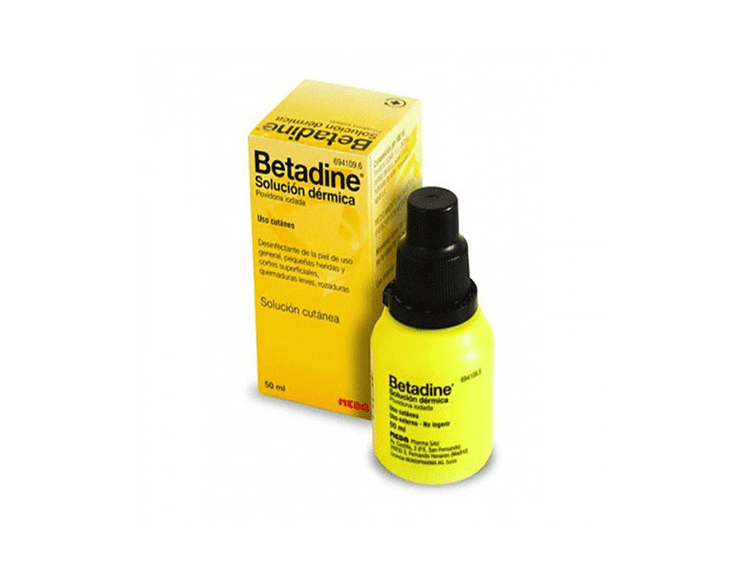
Deep burns can apply this method to turn wet necrosis into dry necrosis to avoid infection and poisoning. Additional coordination can be achieved by drying the burn, leaving the patient in an air-conditioned room, where the air is dry and mildly hot. The above method requires the doctor to closely monitor the progress of the burn, when the burn is found to be exuding a lot of pus, it is necessary to switch to the method of changing the dressing.
III. On-site monitoring of burns
Monitor daily, especially during dressing changes, for changes in the following factors:
Area and depth of burn. Condition of discharge, pus discharge, pseudomembranous, foul odor and color of burn fluid. Inflammation and swelling of the burn and margin. If the burn is intensely inflamed, spreading to healthy skin (burns in the lower extremities or spreading to the perineum, genital area) often progresses seriously, the risk of infection is high. Congestion, bleeding at the burn. The nature and progression of necrotic tissue (with deep burns): does it fall off or not? Is there growth of granulomatous tissue? The nature of the granulomatous tissue is beautiful or edematous, fibrotic. The fine granulomatous tissue has a flat image, regular bleeding, little pus and pseudomembranous, good epithelialization from the margin. Need to detect burn secondary necrosis with the following signs:
Burns suddenly dry, turn purple, black brown, black. The burn suddenly releases a lot of fluid, has a foul-smelling pus, and has strong bleeding. The epithelialization from the burn margin is poor, the margin is completely concave compared to the healthy skin, necrotic shedding without granulation tissue growth. The patient's general condition worsened with signs of sepsis, septic shock.
Please dial HOTLINE for more information or register for an appointment HERE. Download MyVinmec app to make appointments faster and to manage your bookings easily.





